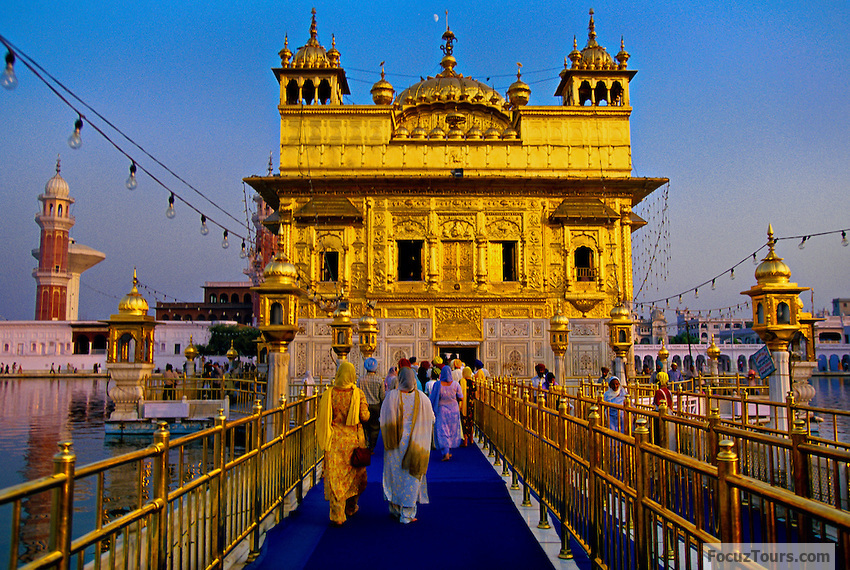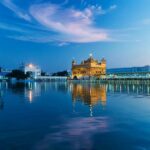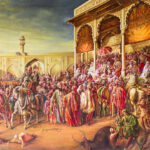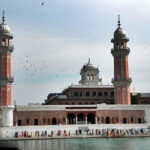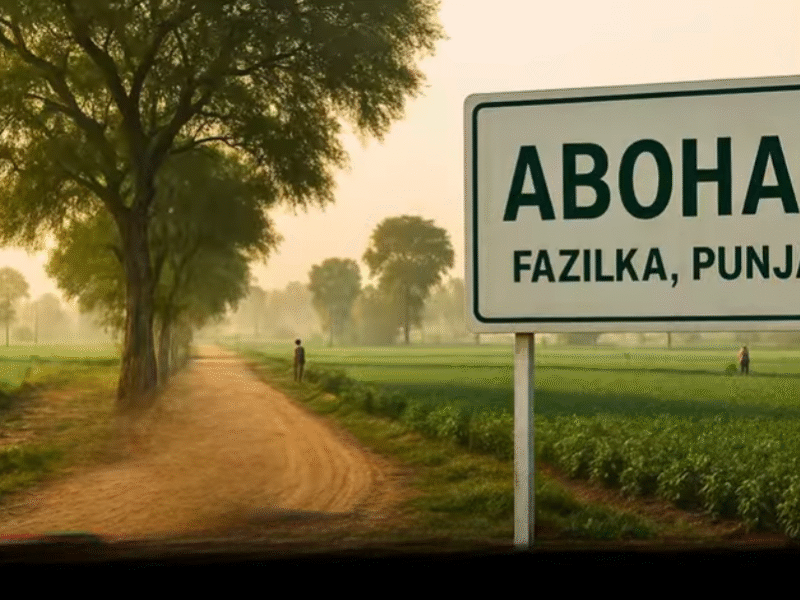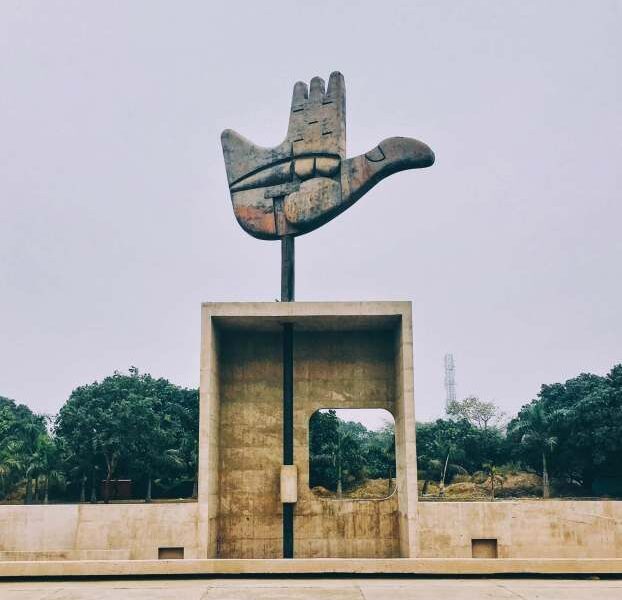THE HARIMANDIR SAHIB (GOLDEN TEMPLE)
The Harimandir Sahib, also known as the Golden Temple, is a building in Amritsar, Punjab, that seems to be universally recognized as a work of Sikh art and architecture. And in fact, this incredible building might be considered the pinnacle of art in the Sikh psyche. The Golden Temple is the most striking example of hybridity in terms of how Sikhs combined the most important elements of Muslim and Hindu styles of architecture, even though some have perceived it as a later form imitating the Mughal style of architecture. Instead, it represents both Muslim and Hindu forms of art and architecture. And what are these remarkable and special characteristics?
The first Sikh Guru, Guru NankDevJi, originally identified the large tank, or “waters of life” area, as being a majestic location for reflection and meditation. This place is where the temple gets its name. The temple itself emerged from this single location, resembling a lotus flower, as it is frequently compared to, and its full splendid reflection can be seen in the pure waters. The interior of the shrine is covered with fresco paintings, and intricate designs of art inlaid in marble that are of varied textures, colors, and hues. The front of the shrine is covered in gold plates and marble. The shrine’s two stories are topped by a golden dome that is intended to mimic the lotus symbol.
Once inside, past the huge hall, is where Guru Granth Sahib Ji’s presence can be felt. It is lying beneath a lavishly and exquisitely designed canopy. But although the shrine’s golden exterior as a whole is what most astounds, the architectural design of its surroundings is also stunning. For instance, the temple’s entrance gate, which is made up of Rajput and Bengal Mughal Chhatri-style models, is 10 feet by 8 feet piece embossed with panels, the backside of which is painted with exquisite ivory artwork with pictures of birds, lions, tigers, and other animals. It is not surprising at all that the Golden Temple contains such fundamental elements of architecture and art, even down to the smallest details. The central location for Sikh religious devotion, its ancient origins, and its exquisite exhibitions have profound significance for Sikhs and even non-Sikhs around the world.
SIKH GURDWARAS
As can be observed from the architectural plan of the Harimandir Sahib, every gurdwara in the globe has its distinctive traits which are significant to Sikhism. One such trait evident in any Sikh Gurdwara is that there are entrances on all four sides, which indicate the Sikh concept that all peoples of the globe are welcome in any gurdwara in the world, regardless of their sex, caste, creed, or religion. Each gurdwara has a “deorhi,” or entrance gateway, just as there are four entrances in a gurdwara. The “deorhi” is a huge and majestic edifice that frequently doubles as an office or “daftar.” Four primary shape types may be seen in gurdwaras all over the world: the square, the rectangular, the octagonal, and the cruciform. Gurdwaras can be one to nine storeys long overall, depending on the size of each storey. The dome at the very top of every gurdwara is an important feature. The domes are typically white, but occasionally they could be shielded with brass or copper gilt. In any event, like Mount Kailasa in Hindu legend, the dome might likewise emerge from a flowering basis.
THE FIVE TAKHTS
The five Sikh Takhts, which stand in for the Sikh thrones of religious spirituality and power, are referred to by the Persian word for the throne, Takht. The five thrones are spread out across Punjab and even Maharashtra and include the Takht Sri Harmandar Sahib in Patna, Bihar; the Takht Sri Kesgarh Sahib in Anandpur; the Takht Sri Hazur Sahib in Nanded; and the Takht Sri Damdama Sahib in Talwandi Sabo, Punjab.
Each of the five Takhts is an important location for Sikh religious authority, but the Amritsar throne (placed across from the Golden Temple) has higher significance as the final seat of authority for all matters relating to the Sikh religion. The Sri Akal Takht Sahib in Amritsar, which Guru Har Gobind Singh Ji originally constructed, served as a symbol of a rebellious power against oppressive Mughal troops in the seventeenth century.
FORTS AND TEMPLE OF ANANDPUR SAHIB:
Although most people associate Anandpur Sahib with Sri Kesgarh Sahib, this city is home to a variety of beautiful buildings, including some significant Sikh Gurdwaras and Forts. Naturally, the Sri Kesgarh Sahib is among the constructions that are most prominent and well-known. Sri Kesgarh, one of Takht’s five thrones, is undoubtedly beautiful to behold. The enormous, all-white structure, built in 1699, served as the setting for Gobind Singh Ji, the last surviving Guru, initiating the “Panj Pyaras” and founding the Khalsa Panth. The Sri Guru Granth Sahib is housed in Sri Kesgarh Sahib’s main hall, and 12 relics connected to Guru Gobind Singh Ji and other Sikh martyrs are kept behind this main hall, in the middle, and covered by glass. The Gurdwara Guru De Mahal, whose foundation was set by Guru Tegh Bahadur Ji, is yet another stunning Gurdwara in Anandpur. Although the name suggests a single, fixed edifice, the Gurdwara is made up of several separate structures, including Gurdwara Bohra Sahib, Manji Sahib, and Damdana Sahib. Anandpur is home to a large number of forts, as well as numerous Gurdwaras, each of which has historical value in its own right.
